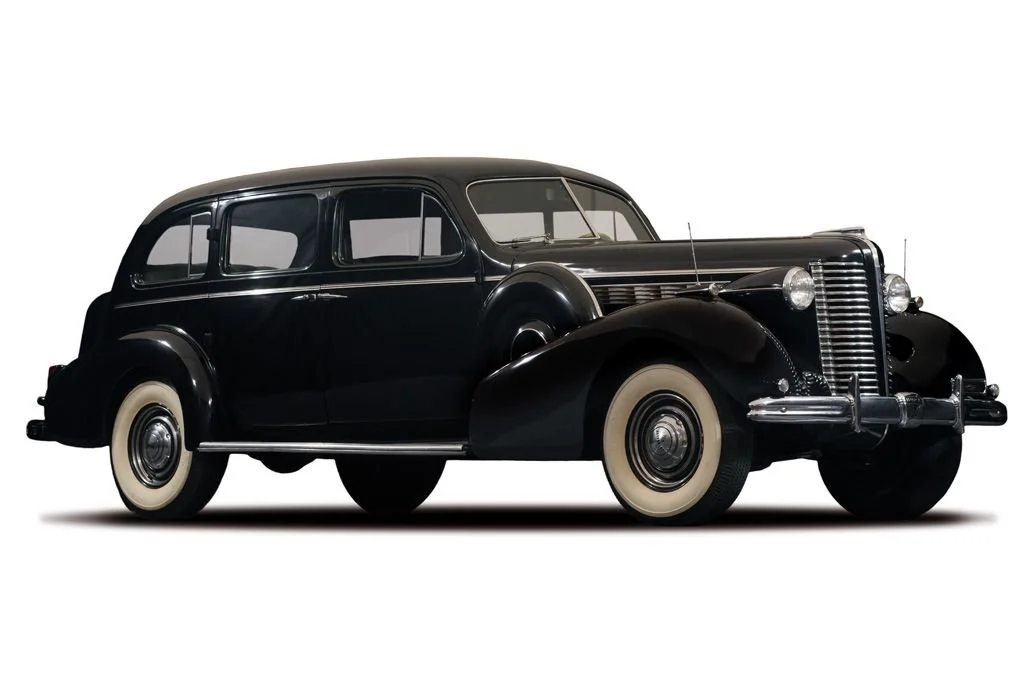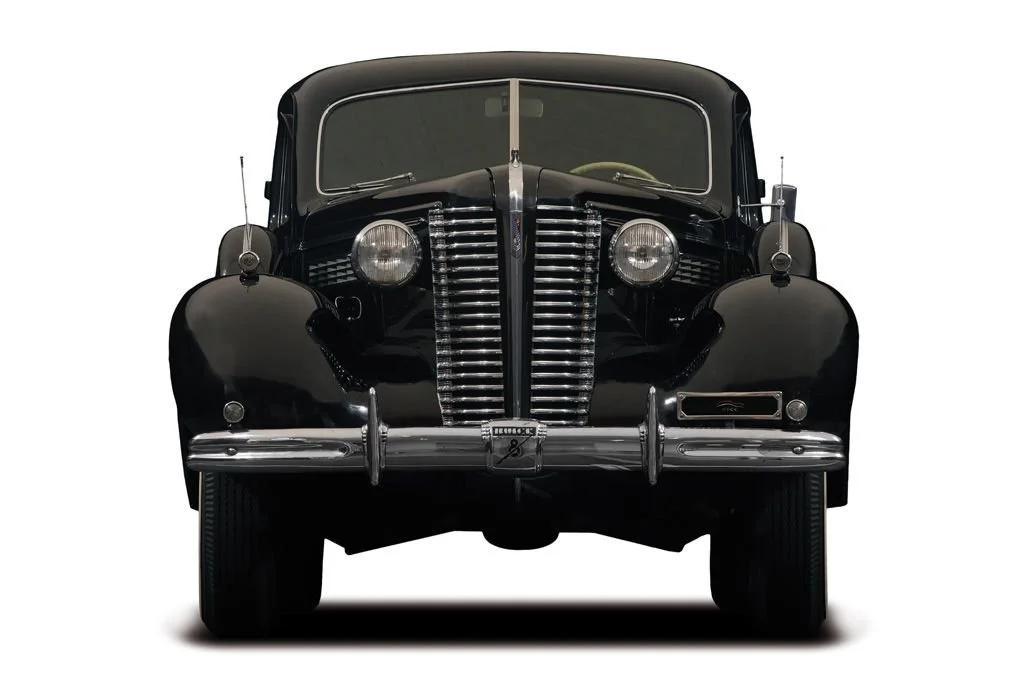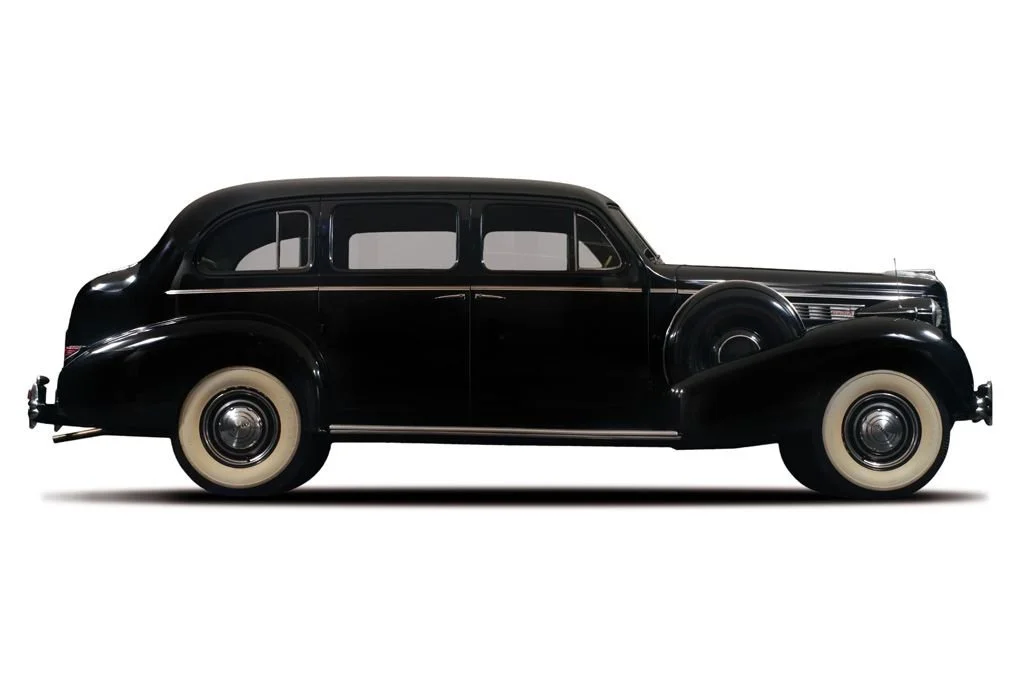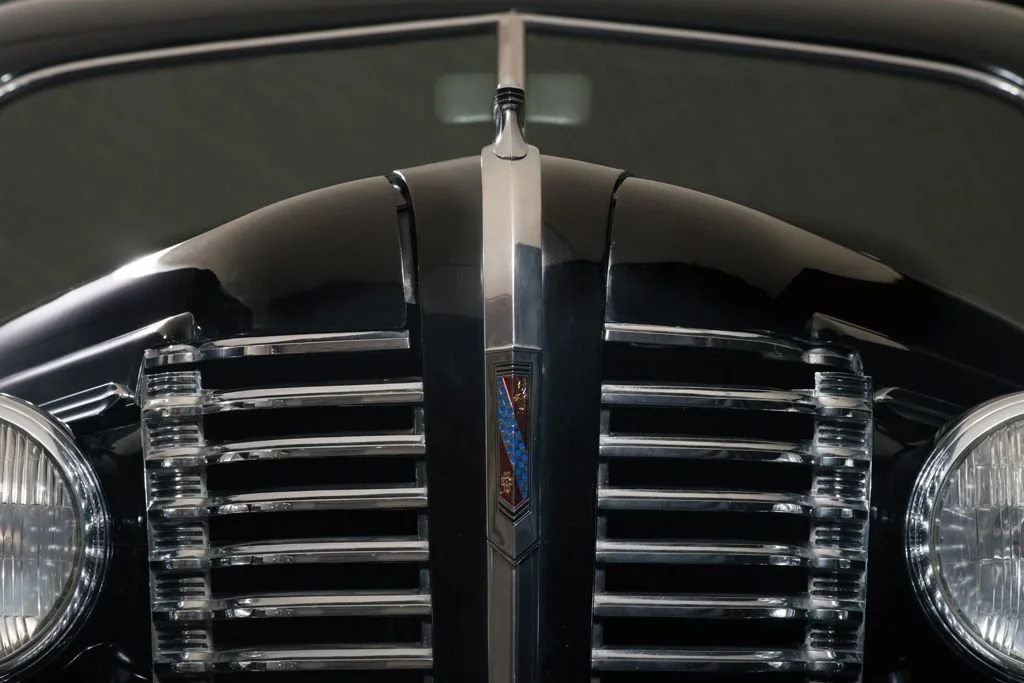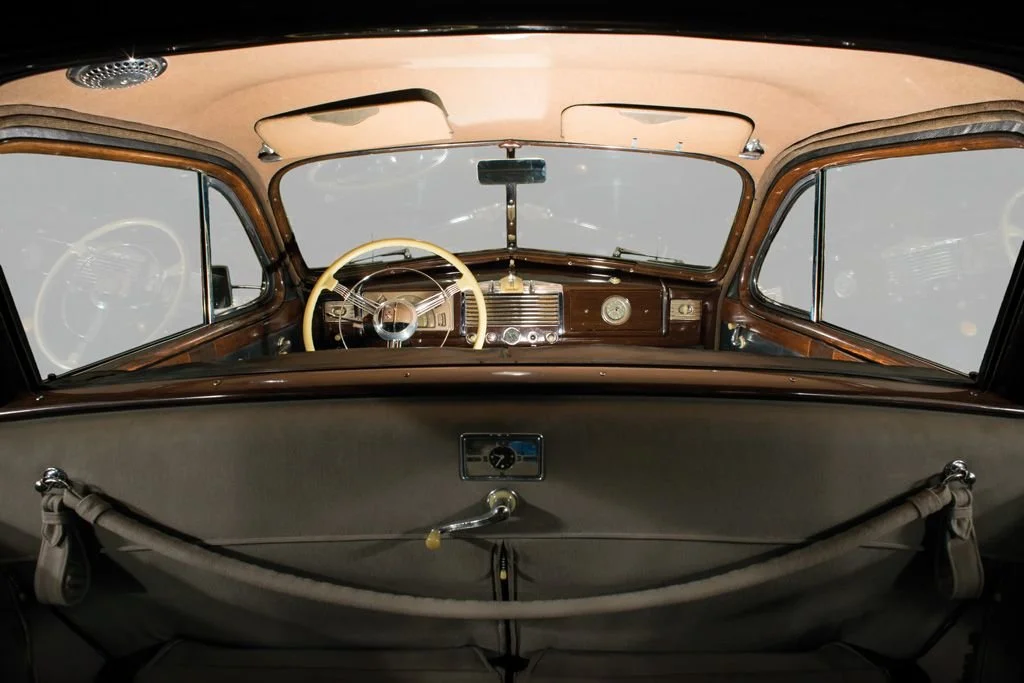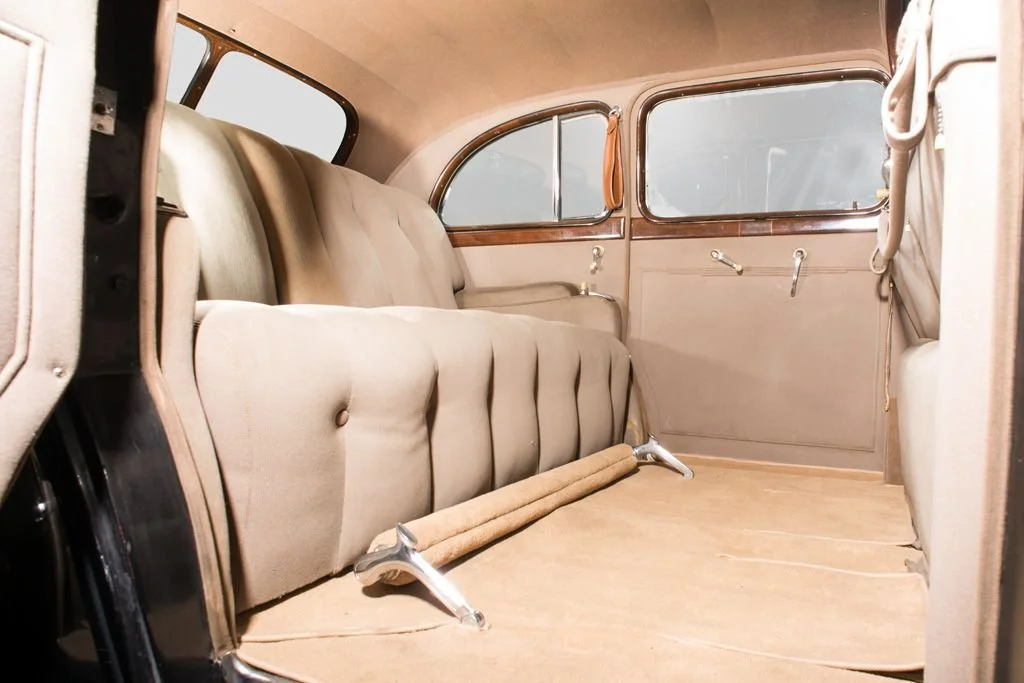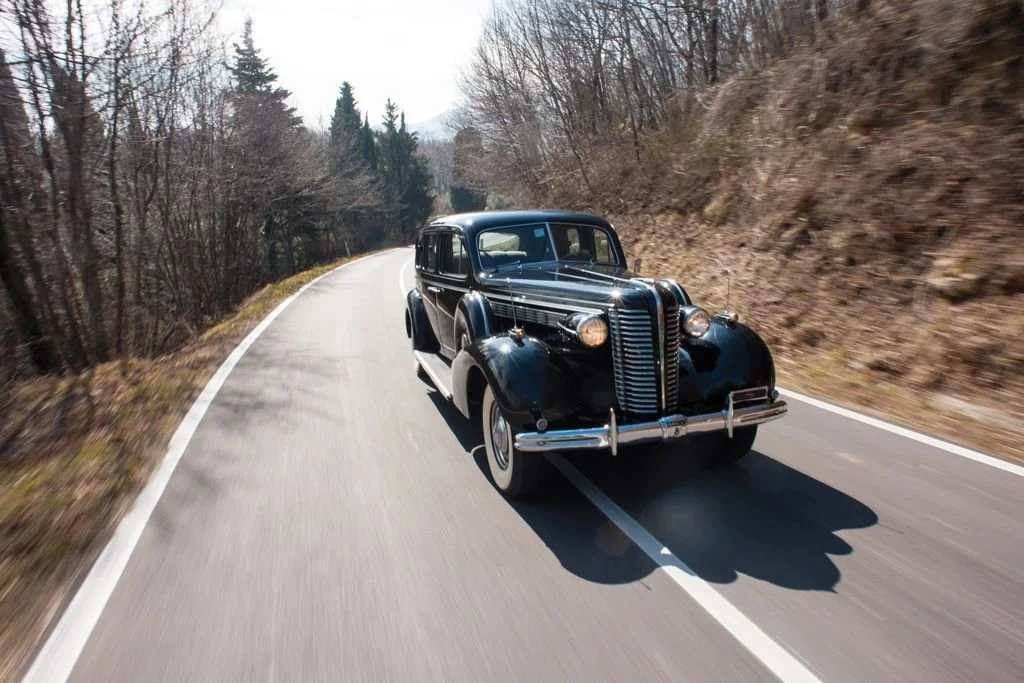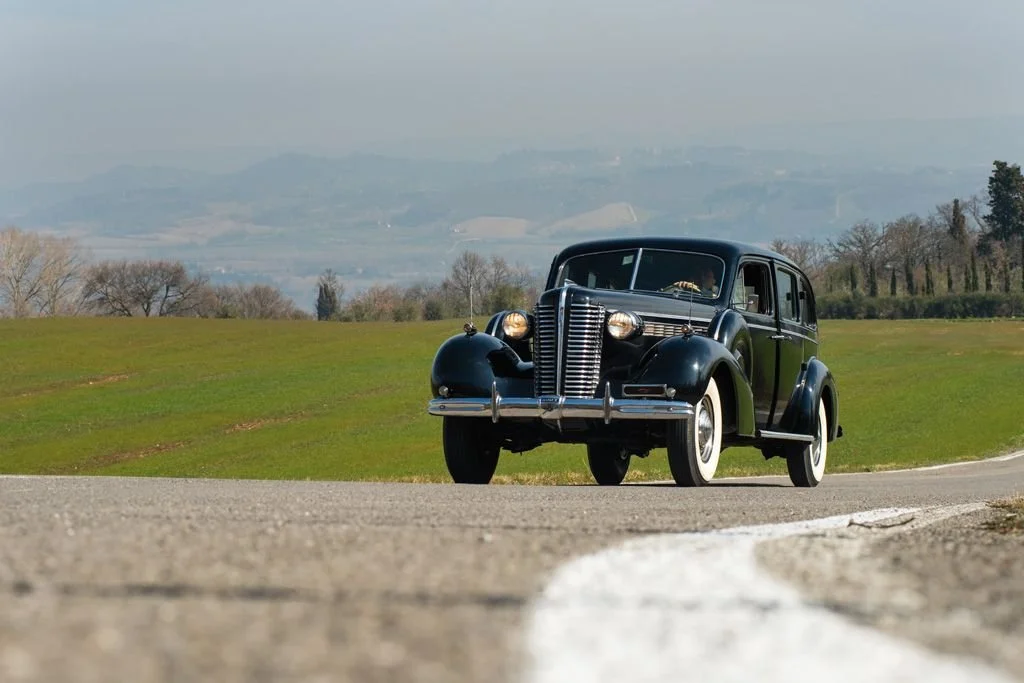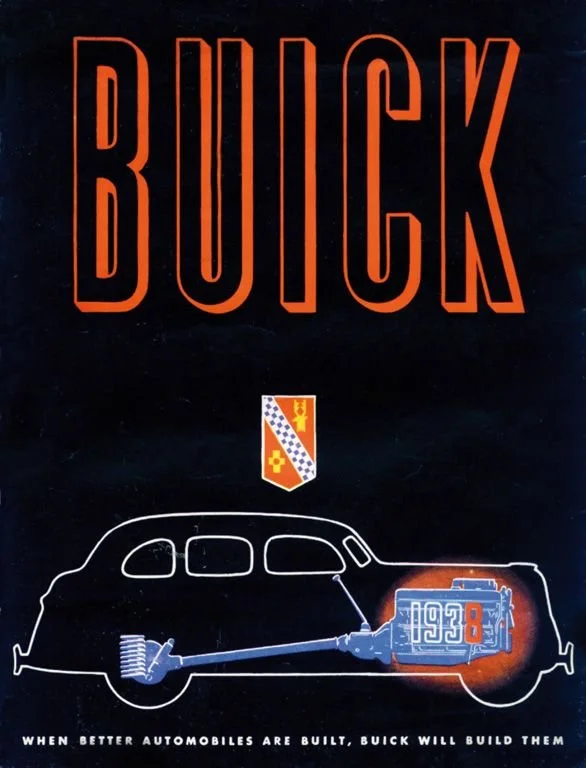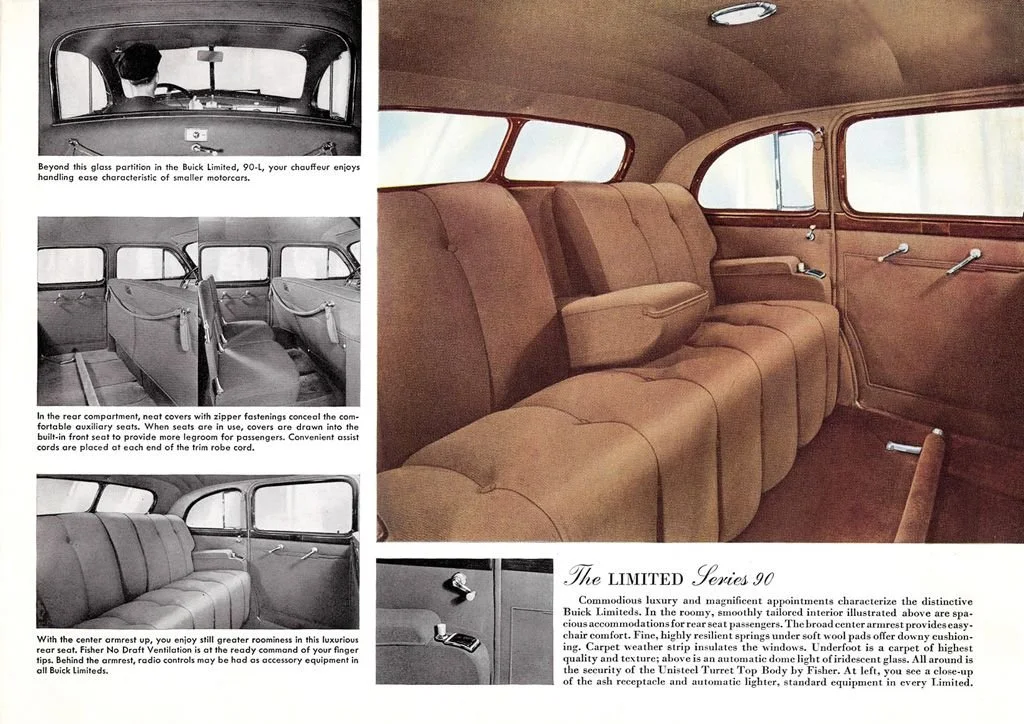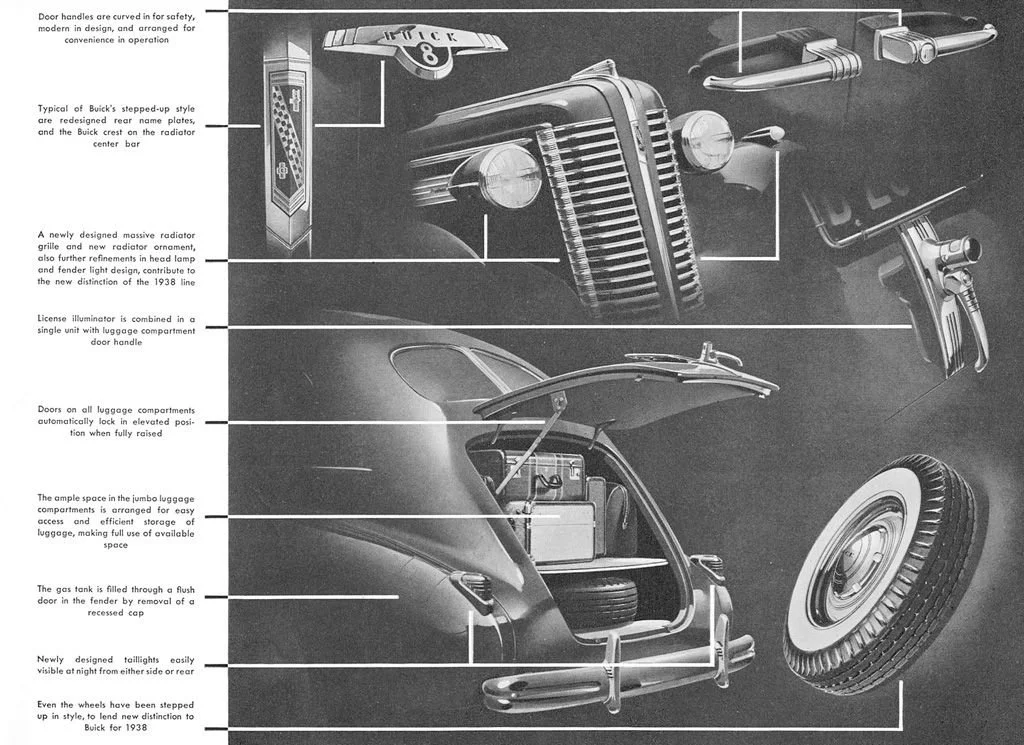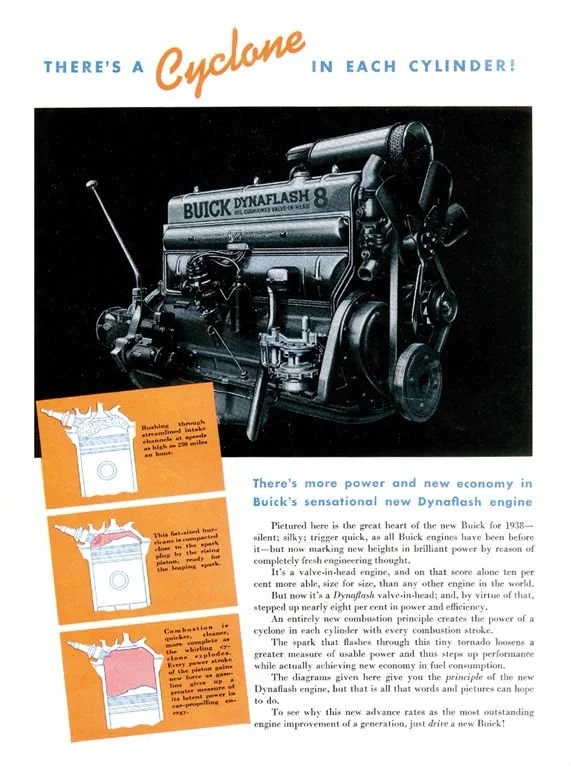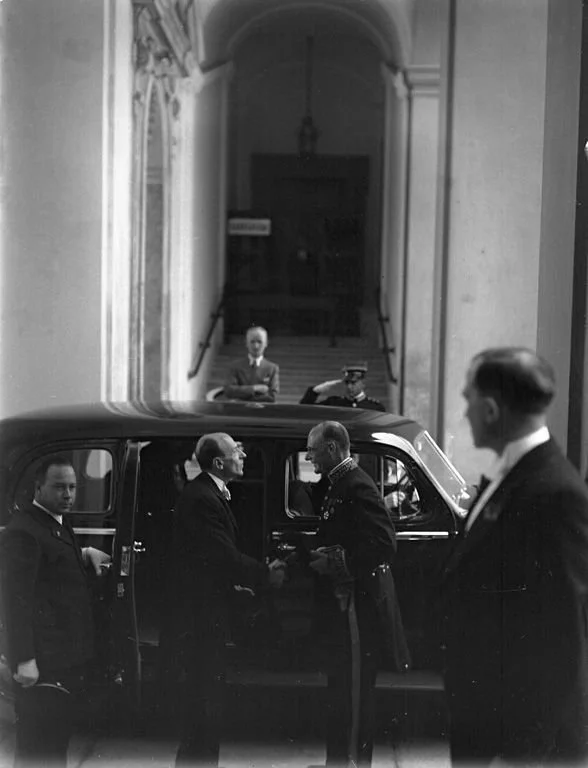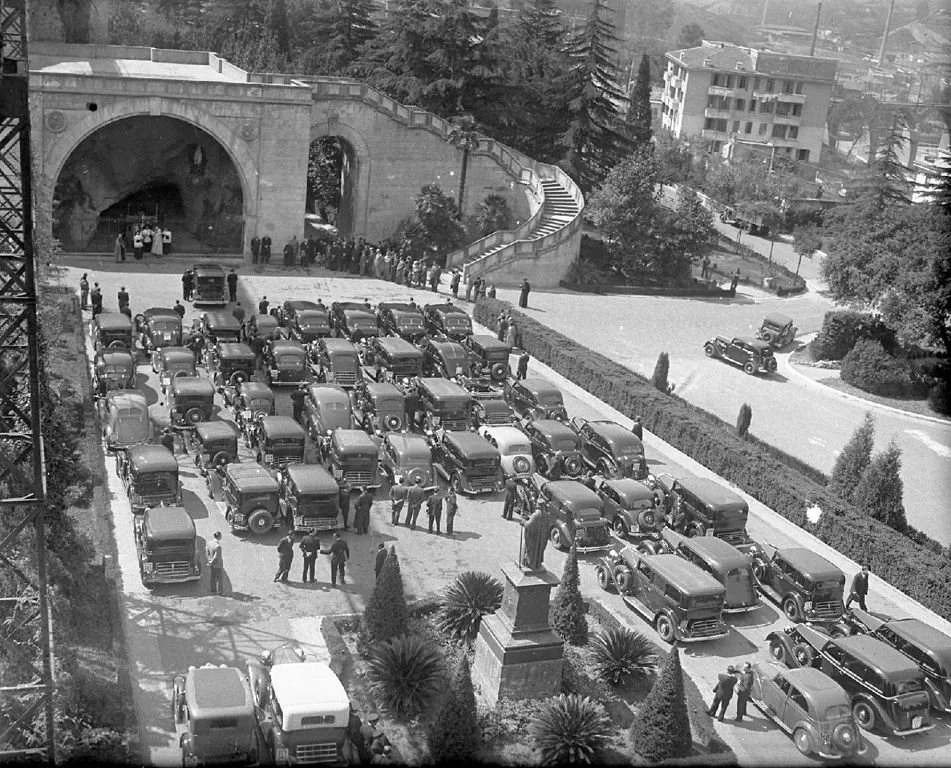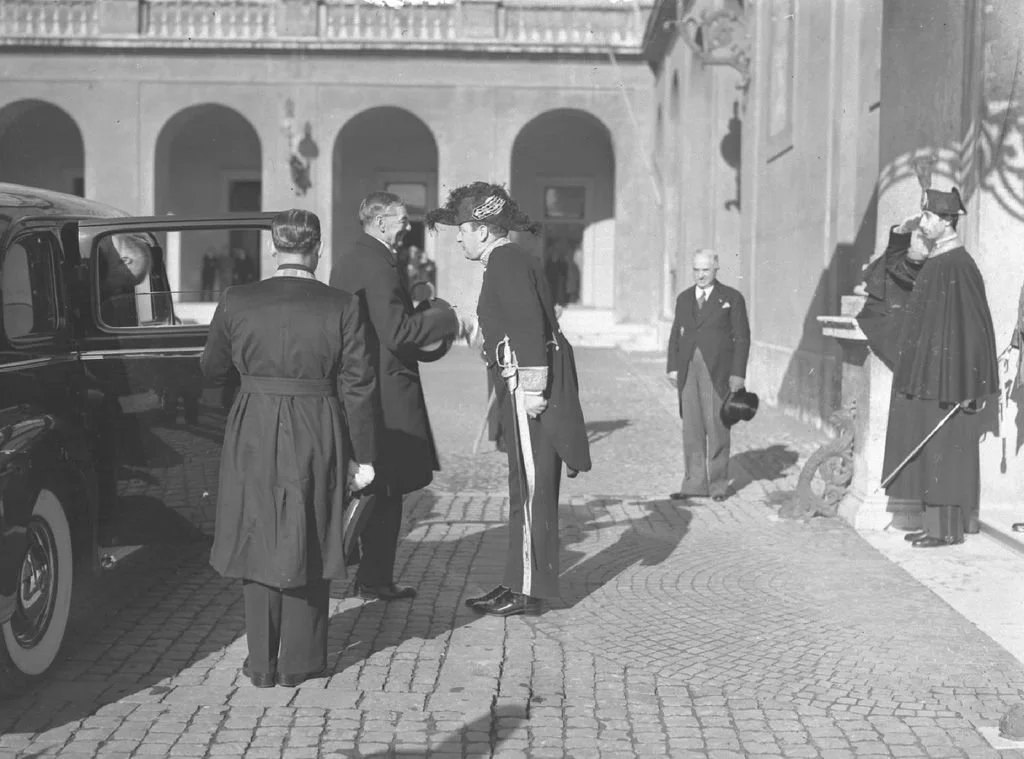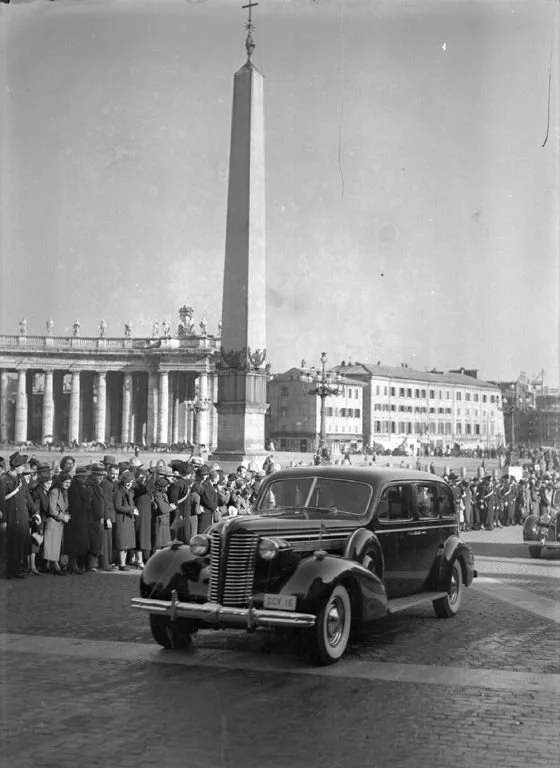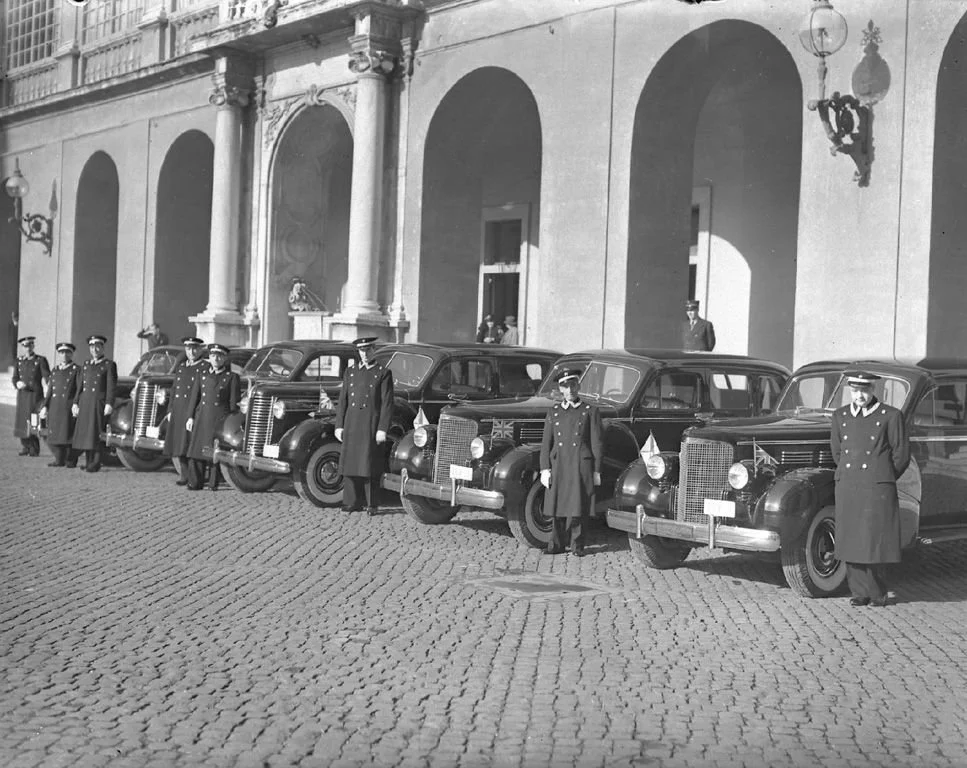-
When the Città Del Vaticano government felt the need for a new limousine to be used by His Holiness Pope Pius XII, they ordered a new one from the Cadillac dealership in Rome. The specifications according to the protocol for use by His Holiness were forwarded along with the order. The task of performing these modifications was assigned to Derham, a Pennsylvania-based coach-building company that had considerable experience in working with special customers. The order placed by General Motors Overseas Operations on January 10, 1947 specified a single “throne” rear seat, 22” to 24” inches wide, with cabinets to the left and right of the seat, two auxiliary chairs facing towards the “throne” seat, roller curtains on all rear compartment glass, sunshine sliding roof, intercom with the driver’s compartment and additional lighting. All this for an additional $3,300 over the $4,422 list price of a Cadillac Series 75 Imperial Limousine. The car was delivered to the Derham Company on March 10, 1947, and work was completed in two months. When the car was finished, the brand-new series 75 Limousine was delivered to the Garage Nobile in Città del Vaticano, where emblems and flag poles were added for the official use planned for the Cadillac. When all the work was completed, the license plates 1SCV were fitted to the car. The Cadillac was then put into service, and is seen in many pictures and movies of the time with Pope Pius XII on board. When Pius XII died in 1958, the car needed to be altered to suit the requirements of the new Pope, John XXIII. He ordered some modifications to the car that involved the rear portion, where the sliding roof had been installed by Derham. The opening was expanded, to allow more space for the Pope to enter the car. His health was not very good, and he had problems bending his back, so the upper part of the roof over the rear door frame was also modified, to allow easier entry to the back part of the car.
Pope John XXIII died in 1963, and the car was relegated to secondary use, with different license plates. In the late Sixties, the limousine was taken out of service, the modifications to the rear portion of the roof and the “throne” were removed, and a stock rear seat was installed in its place. The car was subsequently sold, and came into the possession of an Italian collector.
In 2003, the Nicola Bulgari Car Collection purchased the Cadillac in fairly good original condition, needing a complete mechanical overhaul and some repairs to the original interior. The body and paint were in good condition, with only some paint touch-ups on small parts of the bodywork. Most of the car still sports the original paint applied by Cadillac in 1947. When Mr. Bulgari visited the Garage Nobile in 1963, he took many pictures of the car, along with other vehicles used by His Holiness and his staff, and now most of these Città del Vaticano cars are living in his garage. -
Company
General MotorsWheelbase
139inInterior trim
Black front seat/Beige clothBrakes
front and rear drumsMake
CadillacLength
228inEngine
V8 - 346cidTires
7.50x16Model
Series 75 - Model 7533Width
82inCarburetor
1 Carter WCD 595SOriginal Price
$4,711Body style
Fleetwood Imperial SedanWeight
4,605lbsHorsepower
150hp @ 3400rpmProduction
1,005Model year
1947Exterior paint
BlackTransmission
Hydramatic 4-speed automatic -
The luxury segment of the market had changed greatly in the period around the Second World War. The Great Depression had swept away all the small marques that didn’t have the resources to survive, and only the big corporations could get through the deepest economic crisis in recent history. Marques like Pierce Arrow, Duesenberg, Stutz, Auburn, Cord and many others had closed for complete lack of sales. General Motors, thanks to Chevrolet’s good sales, had the means to rescue the ailing Buick, while Cadillac wasn’t out of trouble either. Lincoln could survive only because Ford had the strength of the popular V8 engine, and Chrysler Imperial sales were supported by Plymouth and Dodge, all part of the Chrysler Corporation. Packard fell on hard times in the mid- Thirties, and only the introduction of the mid-priced 120 could save the company. The 1938 crisis delivered the final blow to the luxury car market, forcing even General Motors to reorganize its sales hierarchy. The LaSalle brand was eliminated since the management team felt that the buying public considered it a cheap Cadillac. So, to compensate for the loss, the lower-priced Model 61 was introduced to gain sales in the lower portion of the market. Engine production was reorganized, and multi-cylinder power-plants were canceled, concentrating only on the L-head V8, powerful and reliable. Buick’s top-of-the-line models were eliminated, leaving Cadillac as the only General Motors luxury brand. In the Ford field, in 1939 Lincoln built its last custom K series models, all equipped with coach bodies built by independent suppliers. Chrysler Imperial production was negligible, so only Packard remained to fight with Cadillac in the luxury car field. The Twelve models, equipped with a V12 engine, were discontinued at the end of 1939, and the company’s efforts shifted towards the new revolutionary Clipper models scheduled for 1941.
After the Second World War ended, civilian car production resumed for the 1946 model year, and only Packard and Cadillac would market cars that could be considered luxurious by kings and presidents. Between the two, Cadillac was decidedly more modern, with an L-head V8 engine and automatic transmission, more powerful and easier to drive than the straight-eight with the standard three-speed manual. The limousine body was built on a 136 inch wheelbase, with a styling completely different from that of the regular cars, derived from the pre-war models. With the European auto industry on its knees due to the war, it was natural that US vehicles were the only choice for someone needing a prestigious car. -
Until 1929 the Vatican had no cars at all, relying on traditional horse-drawn carriages. It was only when it was established as a State that it acquired its first automobile, a Graham-Paige. That car remains in the Vatican museum to this day, but the other pre-war limousines that were used for VIP transport – Buicks, Cadillacs and Packards – were disposed of and eventually acquired by The NB Center.
The history of the Vatican limousines is astonishing. The NB Center’s archive includes photographs of several of them – brand new and still unregistered – being blessed by Pope Pius XI in 1938, of the Cadillacs with Pius XII and John XXIII, and of the cars’ use by notable figures including royalty, heads of state and high-ranking diplomats.
Some of these ex-Vatican cars were found in excellent condition; they were not much used, so their engines were near-perfect. Others fared less well; a Cadillac sold off in the early 1960s ended up in the 1970 movie ‘Patton’ and was in poor shape. One of the Packards was also used in movies and had acquired a different engine and transmission, leaving it with two shift levers. Nevertheless the underlying build quality of the cars is very evident; in some cases the chrome brightwork merely needed polishing.
The skilled and committed NB Center teams in Rome have learned a great deal from their colleagues in Allentown, and the repair and restoration of the Vatican cars were all managed entirely in-house by the mechanical staff led by Sergio Caudai and by the skilled bodyshop team of Carrozzeria A. Rizza.
The limousines have all received sensitive restoration, maintaining as much of their precious originality as possible. These exceptional and historic vehicles should stay in Rome, of course, but The NB Center intends to create a special place for them in the city, separate from the rest of the collection, where their intriguing story may be presented in all its fascinating detail.

